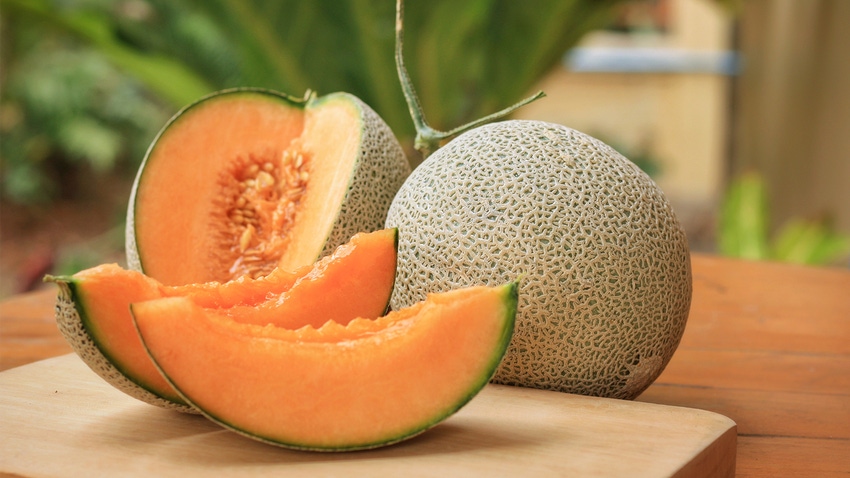FDA investigates cantaloupes linked to salmonella
The agency is investigating two separate recalls of fruit products, with cantaloupes potentially contaminated with salmonella, and stone fruits—including peaches, plums and nectarines—suspected of adulteration with listeria, leading to illness outbreaks across multiple states.

At a Glance
- Two separate recalls of fruit products—cantaloupes and three stone fruits—are being investigated by FDA.
- The contamination extends to various forms of cantaloupes, including whole and pre-cut chunks, sold under different brands.
- The sources and contamination methods differ between fruits, with cantaloupe risks often attributed to on-farm sources.
FDA is currently investigating two separate recalls of fruit products in rapidly developing illness outbreaks involving several different companies. Cantaloupes, both whole and fresh cut, have the potential to be contaminated with salmonella. Stone fruits—specifically peaches, plums and nectarines—are possibly adulterated with Listeria monocytogenes. While all implicated fruit is likely past its expiration date, frozen fruits may be available.
Whole cantaloupes affected were distributed between Oct. 16 and Nov. 3, 2023, by Sofia Produce LLC dba under the name Trufresh. The cantaloupes, sold under the Malichita and Rudy brands, are marked by a PLU sticker that has the number 4050 and the words “Product of Mexico.”
Jewel Marketing and Agribusiness LLC (dba Crown Jewels Produce) joined the recall of whole cantaloupes. The company sold wood-like cardboard cartons of cantaloupes with the label Malichita/Z Farms. Whole cantaloupes from Pacific Trellis in corrugated cartons with certain lot codes, distributed between Oct. 18 and Oct. 26 in California, Illinois, Oklahoma, Texas and Wisconsin, were also recalled on Nov. 24.
The trail becomes more complex as cantaloupes were processed. Pre-cut cantaloupe chunks sold alone or as part of fruit medleys were sold under the Vinyard, Aldi, Freshness Guaranteed and RaceTrac brands. CDC reported, as of Nov. 24, the case count had doubled since the last report on Nov. 17—now up to 99 illnesses across 32 states. Forty-five people have been hospitalized and two deaths have been reported.
Aside from timing, there is little in common between the cantaloupe and stone fruit outbreaks. Not only are the pathogens different, the sources of the fruit and the means of contamination also vary.
“Netted melons have a risk of salmonella contamination more commonly attributed to on-farm sources,” Trevor Suslow, Ph.D., professor of cooperative extension and applied research for preharvest to postharvest quality and safety at University of California, Davis, said.
Previous listeria outbreak cases of peaches and apples were found to have equipment cross-contamination at the packinghouses.
“Cantaloupe produced in and shipped to the United States and Canada are implicated in this apparently expanding and very serious outbreak in both countries,” Suslow explained. “The implicated cantaloupe originated in the Sonora region of Mexico and as is often typical, distributed broadly as whole fruit and pre-cut melon. Over the past three decades, a great deal of information has been generated on the sources, biology, survival, growth and key preventive programs of diverse salmonella for cantaloupe and other netted rind melons. Publicly available insights on root cause for contamination and the potential for growth in distribution and handling are both limited and largely unknown.”
In April 2023, FDA issued findings of an investigation into salmonella contamination in cantaloupe during the summer of 2022. In that outbreak, 87 people became ill and 32 were hospitalized. Traceback salmonella positive environmental samples were found at each location, but none of the resulting salmonella isolates conclusively matched the outbreak strain by whole genome sequencing. FDA investigated three farms in Indiana, their common packinghouse and nearby public lands. Although the investigation did not result in identification of a specific microbial source or route that resulted in this outbreak, the agency identified salmonella spp. in on-farm, post-harvest and off-farm environments.
Salmonella can cause diarrhea, fever and stomach cramps. Symptoms can be delayed, making it difficult to identify the source of the foodborne illness. Symptoms may begin six hours after swallowing the bacteria or as late as six days after. Treatment is usually not necessary with recovery occurring four to seven days after illness. Children under 5, adults 65 and older and people with weakened immune systems may experience more severe illness.
About the Author(s)
You May Also Like






